Yoga and Vedanta: The Legacy of the Indo-Aryans
You didn’t have to go very far, or have too far out a view on the world, in order to be exposed to Yoga in the hustle and bustle of modern day. In modern times, what we like to call the “Digital Era”, Yoga is viewed primarily as a means to better health, and perhaps most importantly, as a means to a better and more elegant body. The pursuit of the peace and tranquility of the calmed mind is somewhat of an afterthought in modern day Yoga, but historically it was in fact this pursuit of the understanding of the nature of mind, and its relationship to the divine, that is the core purpose, and true legacy, of all systems of modern day Yoga.
Yoga, as a system of philosophy and theology based upon the teachings of the Vedas – and the branches of thought and belief that stemmed from the Vedas like Buddhism for example – to a certain extent are a reflection of what you may call the religion of the Hindus, at least the mystical and theo-philosophical tradition of the Hindus. And to this end, as we have looked at the cosmological narratives (Creation Stories) of many other ancient theo-philosophical systems to understand their respective culture’s worldview, we can gather much about the worldview of the ancient Hindus, the children of the Vedas as it were, by taking a closer look at the creation stories – myths really – that are embedded in the Vedas, stories of the creation of the universe that in some respects establish the foundation of the theo-philosophy of Vedanta, the philosophy of the Vedas, from which their in depth, rational approach to understanding the true nature of mind and its relationship to liberation and the direct experience of the divine come from.
As an intellectual contextual framework, it is worth noting here that in the modern era we are arguably faced with two very different worldviews, two ends of the metaphysical spectrum as it were, from which our relationship to reality, what we call here worldview, derives from. The bookends of this spectrum of beliefs, if we may draw the lines thus, are perhaps best understood as “Eastern” versus “Western”, even though these terms no doubt reflect an era that is much less connected, or synthesized, than the modern Digital Era to a certain degree at least. It’s from this reference point, this metaphysical landscape if we may call it thus, that it is perhaps most helpful to look at Yoga, as the study of the nature of mind, as reflective of the Eastern worldview, while the Western perspective for the most part sits in contrast to this more holistic, and integral Eastern worldview and is based upon the premise of the existence of an objective, causal based reality which we participate in as an actor – what we refer to sometimes as causal determinism, or objective realism.
This metaphysical landscape as it were, arguably is very real, and has a profound effect on how we experience the world, not just intellectually but psychically as well – all very much derived from an understanding of how the world works (again worldview) that, albeit implicit and often overlooked, nevertheless underlies every person’s perspective on the world and their respective experiences within it, perspectives – assumptions really – that are baked into our psyche’s from childhood, so deeply embedded that the fact that these principles are in fact assumptions and not necessarily real in and of themselves, ideas that are not discussed outside of very specific philosophical and intellectual circles, are very much overlooked with all sorts of consequences that are typically just not considered. It is for example very pronounced when you look at the world of theoretical physics and its relationship to what we all see and perceive as real, the belief and blind faith in the mechanistic nature of things and the existence of individual objects and things that are separate from, and only outwardly perceived by, the individual mind or subject – one of the reasons why Quantum Theory baffles so many in these scientific academic disciplines, because it overturns this idea of causal determinism which underpins the Western worldview and brings to light in fact these assumptions which are implicit to our understanding of how the world works – again worldview.
As we look at the intellectual (theo-philosophical) contributions of the Indo-Aryans, the people who authored the Vedas in the 2nd millennia BCE or so from which Yoga is derived, arguably their (at least one of) unique contribution to the intellect of man, to theology and religion, is this belief in the individual nature of the religious experience – not only that this experience was a real thing that could be tapped into, manifested, in each and every one of us, but that it existed outside of the typical socio-political structures and hierarchies that were such marked characteristics of Western theology, i.e. Religion, where salvation was reserved for those that followed the one true path, with hell being reserved for those who were not so fortunate. This connection between religion and political authority, power really, is a fundamental characteristic of Western civilization really (Islam, Christianity, Judaism…) but in the East, and in this case in (ancient) India specifically, we see religious authority drawn against very different lines of authority – a caste system that distinguished between those that fought and ruled (Kshatriya), and those that held ultimate authority in, and were charged with the preservation of, religious matters (Brahmins).[2]
While there were drawbacks to this type of socio-political structure no doubt, exclusivity and segregation that the Buddha himself rebelled against, nonetheless this separation between authority and power, and divinity, was a unique contribution of Indo-Aryan civilization and to this extent it existed in somewhat stark contrast to the socio-political structures in the West (Ancient Egypt, Ancient Sumer-Babylon, etc) where a direct connection between the divine and political authority was drawn. This caste system was in place very early on in Indo-Aryan society, and arguably could be said was a fundamental characteristic of ancient Indo-Aryan society itself, characteristics which to a large extent allowed for the preservation of their theo-philosophical system from being tarnished, or usurped, for political gain or power.
In looking for the origins of this proto-typical “Eastern” worldview then, it made sense – as we have done for many of the ancient civilizations in and around the Mediterranean – to look at the cosmological narratives, the creation stories and myths, of the ancient Hindus, i.e. the Indo-Aryans. In contrast to the mythological creation narratives of some of the other cultures we have studied though (Ancient Egypt, Ancient Sumer-Babylon, etc), interestingly the Indo-Aryan mythos was not so clearly codified and descriptive as its sister cultures in Mesopotamia and Egypt, and certainly not as well transcribed and documented as the mythology and cosmology of the Greeks and Romans. This was somewhat odd, especially given that the extant Sanskrit literature of the Indo-Aryans was fairly extensive, but this literature – and the creation narratives more specifically – was spread throughout a few different texts and compilations, most notable the Rig Veda and the Puranas.
To have a proper understanding of the origins of this Eastern worldview however, as it is understood from the analysis and reading of the ancient mythos and cosmology of the Hindus, a proper understanding of the socio-political, and historical, context was needed in order to understand the society and civilization within which the ancient traditions emerged. This context, a requisite to understanding the mythos of any ancient civilization in fact, would – in the case of the Indo-Aryans at least – allow not only for a more complete and thorough understanding of their cosmogony and its implications on worldview, but also for a better understanding of the underlying theo-philosophy of the Indo-Aryans, i.e. Vedanta, which arguably is the lasting contribution of this ancient civilization that flourished in Northern India in the 4th, 3rd and 2nd millennia BCE which clearly needed a unique social foundation in order to flourish as prominently as it did over the centuries, and in fact millennia.
The civilization from which Vedanta emerged is traditionally associated with the Indus valley, a river system from which an ancient culture could grow crops and thrive, a similar relationship to the Sumerians and their Tigris/Euphrates and the Egyptians and their Nile. This relationship with water and its fundamental existence and prerequisite feature for the source of life, clearly marked the cosmology and creation mythology of all of these ancient cultures. The ancient Hindus for example looked to the so-called Cosmic Waters (apas in Sanskrit) as the source of the universe, the cosmos, just as the Egyptians had their concept of Nu and the Ancient Sumerians had their Apsu. [While you could argue that all of these traditions stemmed from one ancient source mythology, a more accurate explanation of the similarities in the cosmologies of these ancient civilizations is that the creation mythology of the individual cultures reflected each of their respective relationships and perspectives on the source and sustenance of life, which in each case was defined by their relationship with the river system that their civilization grew and evolved around. The river system was the source of their food and sustenance, and framed their idea of the passage of time and sense of order. Therefore these basic principles were reflected in each of the different civilization’s creation mythology[3].]
This ancient Indus Valley civilization spread and flourished in the northwestern part of the Indian subcontinent from c. 3300 to 1300 BCE, roughly aligning with the peak of ancient Egyptian civilization. The Rig Veda in turn, as one of the primary source texts of the creation mythology of the Indus Valley peoples, is one of the oldest extant texts in the Indo-European language family[4], and is thought to have been composed somewhere in the middle of the second millennium BC (give or take a few centuries). The Puranas, the other primary source of ancient Hindu cosmology, was compiled at a much later date, somewhere in the second half of the first millennium BC, almost two thousand years after the Rig Veda was authored.
In the Rig Veda, the origin of the known universe is said to have originated from the fundamental cosmic principle, or cosmic waters, apas[5]. The first sentient being who emerged from this cosmic water from which all the major gods, earth, heavens, underworld, etc emerged was Tvastr. From Tvastr then came the gods of the Sky and Earth, and then from this triad all the lesser gods came into existence. Even though the Rig Veda is interspersed with mythology and outlines the characters and principles from which the known universe was birthed, the text also states – a unique characteristic of the Indo-Aryan cosmogony in fact – unequivocally the unknowable nature of the source of the universe/cosmos, marking its core philosophical bent and providing the foundation for the later Upanishads which were primarily concerned with the nature of Brahman and Atman and their realization and manifestation.
Neither being (sat) nor non-being was as yet. What was concealed? And where? And in whose protection? Who really knows? Who can declare it? Whence was it born, and whence came this creation? The devas were born later than this world’s creation, so who knows from where it came into existence? None can know from where creation has arisen, and whether he has or has not produced it. He who surveys it in the highest heavens, he alone knows-or perhaps does not know.[6]
The Puranas on the other hand were composed much later than the Vedas, and were an attempt to consolidate and organize the belief systems of the Hindus. The Puranas (from the Sanskrit purana meaning ‘old’) were written in Sanskrit verse, and are regarded as being compiled over many centuries, from around the 4th century BC to the end of the first millennium AD. These works are considered to be sectarian works, sectarian in the sense that they do not ascribe to any specific form of worship or attempt to establish the supremacy of a specific god or deity – again reflecting a particularly unique characteristic of Hinduism literature in general, its lack of political influence or intent to establish some form of authority. The Puranas reinforce this conception of the known universe emerging from a causal watery principle or ocean as well:
After separating the different universes, the gigantic universal form of the Lord, which came out of the causal ocean, the place of appearance for the first puruṣa-avatāra, entered into each of the separate universes, desiring to lie on the created transcendental water.[7]
The Puranas also describe in detail the Hindu concept of the cyclical nature of time and order of the known universe, and take a more expansive view of the notion of time as compared to the mythologies and cosmologies of the Sumerians, Egyptians, and most certainly the Greeks and Romans. As described in the Puranas, the Hindu concept of time, and in turn their concept of creation mythology in general, is framed the life of the mythical figure Brahma, who (like Chronos to the ancient Hellenes to the West in many respects) is the creator, preserver and destroyer of the universe.
Brahma in this context is considered to have been created by Brahman, or Ishvara, and not necessarily equivalent to the Hindu conception of God. In this cosmology, a universe endures for about 4,320,000,000 years, or one day of Brahma, and is then destroyed by fire or water elements back into the source. After the dissolution of the universe, Brahma is said to rest for a day and then the cycle repeats itself all over again. So the Hindu creation mythology ascribes the source of the universe to Brahma, a layer of anthropomorphic abstraction between Brahman and the world of gods and men, who sits atop of the creation and destruction of this known universe, and that in turn each known universe has its own creation, preservation and destruction process and this process repeats itself ad infinitum through the ages.
But complementary to this creation mythology, and the true legacy of the Hindus and Indo-Aryan culture one might argue, is that the experience of the divine was a personal experience and was not the domain of any religious or political bureaucracy. And this system of belief, this religion, held that there were many paths to divine illumination, and that each individual was free to choose the path, and the gods to worship, based upon their own preferences and desires. This was the unique contribution of the Hindu faith, and what still characterizes the society of India today where all religious faiths and paths are equally respected and integrated into the overall society.
In Hinduism then, and in its branches like Buddhism (for Buddhism is to the Hindus what Judaism is to the Christians, Buddha was a Hindu like Jesus was a Jew) presumed this fundamental distinction between Church and State. They had not codified these principles into law per se, like the United States had done after centuries of religious persecution in the western world, but these principles represented a core, integral part of their culture just the same. And from this social acceptance of the individual expression of the divine, many great sages and seers, also known as rishis[8], had been born over the centuries that personified this apex and goal of the Hindu religious system – namely the realization of the divine in this very life. These were such historic personalities as Krishna Buddha, and Chaitanya[9], and modern day great sages like Ramakrishna, whose existence and their ability to practice freely radical forms of religious expression, could only have been possible within the society and culture of the Hindus who had an implicit belief in the freedom of religious expression, a belief that went back thousands of years and had its roots in the ancient scriptures of the Hindus, i.e. the Vedas.
These great sages, these rishis, personified the goal of oneness with the divine, the perception of the kingdom of heaven within, and realized the end of the Hindu scriptures. And they all accomplished this in their own unique way, and yet at the same time each of them reestablished the validity of these ancient scriptures, renewing the people’s faith in their content and precepts which had been born so many thousands of years prior. To all of these great sages the mind and body, and reason and logic itself, was to be used to realize the truth of this oneness. That was its sole purpose of existence. This truth was the great gift that was handed down from the ages from the Vedas.
The primary sources for what is considered modern day Vedanta are three main collections of verses or texts – the Upanishads, representing the end of the Vedas or the philosophical and mystical portions of the Vedas, the Bhagavad Gita or Song of the Lord from the epic poem the Mahabharata, and the Brahma-sutras which was an attempt at consolidating and synthesizing Vedantic philosophy from the 2nd or third century AD. Vyasa is the author attributed to the works of the Mahabharata and the Brahma Sutras, and the Upanishads are considered to be the divine inspiration of the rishis, who manifested the knowledge of Brahman as espoused in the Upanishads. The three works together are also referred to as the Prasthanas, or canonical books, that form the foundation of the philosophy of Vedanta.
The Vedas[10] are the oldest Indo-Aryan Sanskrit texts and are the oldest extant Hindu scripture. Like many other religious traditions, the Vedas are said not to have been recorded and authored per se, but were revealed to ancient seers or rishis, and then documented and transcribed by scholars and sages between the second and first millennium BC. Vedanta, somewhat literally translated as the end, or goal, of the Vedas, represents the philosophical tradition of the Hindus and stems from the philosophical portions of the Vedas, i.e. the portions of the Vedas that do not deal with sacrifice, ritual or dharma (righteous action).
The corpus of Vedic texts, all transcribed in some form of Sanskrit, include the Samhita, which are collections of mantras from the four Vedas[11] the Brahmanas, which are prose texts that describe Hindu sacrifice and ritual, some of the older Upanishads such as the Mukya, Chandogya, Katha and Brhadaranyaka Upanishads which deal with esoteric ideas and concepts describing the nature of Brahman and the Soul, and other sutra[12] literature dealing with Hindu rituals and sacred rites. Each of the Brahmanas is associated with one of the Samhitas and may also include Aranyakas[13], or forest texts, as well as Upanishads which again represent the philosophical interpretations of the sacred rituals.
Parts of the Brahmanas, Aranyakas, and Upanishads explore the core abstract Hindu and Vedic constructs such as Brahman, the absolute or underlying nature of all things, and Atman, the individuation of the principle of Brahman or the soul which represent the core tenants of Vedantic philosophy. The Upanishads form the philosophical backbone of Vedanta however and much like the Ancient Greek traditions of Hesiod and Homer, the Upanishads (and the rest of the Vedic scripture) are considered by scholars to represent an oral tradition that was codified and documented in the second and first millennium BC, but represents a tradition that goes back millennia before, most likely back to the advent of Indo-Aryan civilization itself. In Ancient times, Vedānta referred directly to the Upanishads, or again the ‘end of the Vedas‘, but over time Vedanta took on a broader meaning to represent the body of work and knowledge that interpreted the meaning of the Upanishads, which in turn incorporated the Bhagavad Gita and Brahma Sutras works along with the classic Upanishad[14] texts.
Vedānta is also sometimes referred to as Uttarā-Mīmāṃsā[15], or the ‘latter’ or ‘higher’ inquiry, as juxtaposed with Purva-Mīmāṃsā, or the ‘former’ inquiry which deals with ritual and sacrifice described in the Samhita portion of the Vedas and Brahmanas, while Vedanta explicates the esoteric teachings of the Āranyakas and the Upanishads. As defined by Shankara, a great interpreter and sage of Advaita Vedanta from the 8th century AD, Upanishad is in effect a veiled reference to the content of the Upanishads: namely Brahmavidya, or knowledge of Brahman, and Atmavidya, knowledge of Self.
The concept of God or Ishvara is also present in the Upanishads and the Vedas, but this construct is subservient to the concept of Brahman who/which is beyond the conception of the human mind and is most certainly beyond the language divined by humans to describe the world around them. In the Upanishads, Brahman is the universal spirit that underlies all creation and Atman is that which is universal and all pervasive in each of us individually, our soul or spirit in the Christian traditions. Brahmavidya in turn is the knowledge of this ineffable and indivisible construct of Brahman. The concept of Brahman as espoused in the Upanishads is the belief in the ultimate unity of all things and creatures, animate and inanimate, and the belief in an indelible construct or consciousness which pervades the entire universe and which feeds and gives energy to our souls, or Atman.
The core premise of the Upanishads then can be seen as the belief in each individual’s unity (Atman) with this divine force that is omnipresent and all-pervading (Brahman), and the ability of all individual Jivas, or souls, to achieve the experience of this unity directly and therefore become fully realized beings and free from all suffering and bondage. In essence, Brahman and Atman are one and the same and indistinguishable with illumination and distinguishing between the two, believing they are separate and distinct things and concepts, is the source of all suffering and delusion.
The first attempt at compiling and synthesizing the teachings of Vedanta was undertaken by the great sage Vyasa[16] in the Brahma Sutras, also called the Vedānta Sutras, codified somewhere around the 2nd century after Christ. The Brahma Sutras are part of the Uttara-Mimamsa tradition of Vedanta and are in essence a summary and compilation of the teachings of the Upanishads. It is in the Brahma Sūtras that the teachings of Vedānta are set forth in a systematic and logical order, rather than the scattered and somewhat inconsistent manner which the teachings are presented in the Vedas.
The Bhagavad Gita[17], or the Song of the Lord, although in some schools of thought is not considered a purely Vedantic text, has played a large role in the development of Vedantic thought over the centuries. The Gita is a part of the ancient Sanskrit epic the Mahabharata and is a dialogue between Lord Krishna and Prince Arjuna on the eve of a great battle of Kurukshetra. Arjuna understandably has reservations about the righteousness of going to war against his cousins, and he relays these concerns to Lord Krishna, who is a human incarnation of the divine. Krishna helps Arjuna understand why he must fight, and why it is morally right for him to do so, and the context of this dialogue forms the essence of the Bhagavad Gita. In the process of his explanations, Krishna expounds upon esoteric Vedantic philosophical constructs such as moksha (or liberation), and Karma and Jnana Yoga, the yogas of action and knowledge respectively. Krishna also expounds upon and other philosophical concepts such as dharma and the field of action upon which liberation of the jiva is attained.
The authors of the Vedas, as reflected in the works of the Upanishads, the Brahma Sutras and the Bhagavad Gita, applied their pure reason and logic to the breaking down of the cosmology of the ancients into a logical and reasonably sound belief system which connected the divine superconscious experience and state with the physical world, in a way that was independent of the establishment of authority and power, which allowed sages over the centuries to pursue the end of these Vedas without the risk of persecution. This was and continues to be the unique contribution of the Hindu faith and society. They recognized the existence of Brahman, or God, as well as the conception of the individual soul or Jiva, and laid out a conceptual system that linked the two and described how the two seemingly contradictory and juxtaposing principles could coexist in the same reality.
Brahman then, as conceived by the Hindus, was a self evident construct that was as old as civilization itself. It was the Chaos of the Ancient Greeks, the Nu of the Ancient Egyptians and the Apsu of the Ancient Sumer-Babylonians. But the Hindu religious tradition built upon this construct of reality and expanded upon it, reasonably and logically and bereft of religious dogma. And at the same time, they carried on the fundamental tenet that God can be realized, just as clearly as the realization of the world of objects all around us. According to the Hindu faith, this heaven on earth was the birth right of all of us – no passage or gateway or ticketing required.
So their religion was much more integrated with their world view as the civilizations of the East evolved and matured. This of course came at the risk of the usurping of religious dogma to establish the authority of those in power, but the system of belief which rested on the indivisible nature of the soul and the source of all things was kept alive in these societies in a more pure form of religious thought that was divorced from politics and power. It was protected by the personification of these ideas in the likes of Christ, Buddha and Krishna among others, and in the monastic, renunciate societies that interpreted the scriptures for the purposes of illumination and realization rather than for the establishment of authority or power.
The content of the Vedas is very esoteric, and in some cases can be seen to contradict itself, and to this end many scholars have debated the origins of the material as well as the philosophical implications of the verses themselves. To this end, the philosophy of Vedanta is said to have three primary schools: Advaita, Vishishtadvaita and Dvaita, founded by Shankara, Ramanuja and Madhvacharya respectively.
Advaita Vedanta, as outlined by Shankara in the late 8th and early 9th AD, is arguably the most influential and dominant sub-school of Vedānta, and according to this tradition Brahman is the only reality and the perception of the reality of the physical world and its constructs of distinct subjects and objects is due to the illusory power of Maya, the creative force which causes the individual to perceive individuation and separation within the realm of unity and non-division.
As a curled up rope in the dark may appear to be a snake, and as the true nature of the rope dawns to the individual as the lights are turned on and the rope is revealed for what it truly is, so the world around us appears to be real and when burned in the fire of light and knowledge when we are awakened, we find that the physical world around us is no more real than the rope in the dark.
Advaita literally means non-duality and it’s primary tenet is the non-dualistic nature of the relationship between Brahman and Atman. As Brahman is the sole reality it cannot be said to possess any attributes, and it is only via the power of maya that our perception of the reality of the physical world arises. As such, it is the ignorance of this true reality that lies beyond the world governed by maya that is the cause of all suffering and misery in the world. Therefore, only upon true knowledge and realization of Brahman can liberation from the world of opposites and suffering be attained.
The source of the concept of God, in the Christian anthropomorphic sense of the word, is from the inability of the mind of the jiva to grasp the subtle, abstract concept of the divine principle in a non-anthropomorphic way. Therefore God, or Ishvara to the Hindus is a relevant construct to help us understand the unknowable, but its existence is also a reflection of Maya, and is illusory along with the physical world itself on top of which the all-knowing and all-seeing God resides. But in reality, and philosophically speaking, according to Advaita philosophy there is no difference between the individual soul Atman, and the fundamental underlying stratum which permeates all animate and inanimate objects in the universe and cosmos, i.e. Brahman, and it is through knowledge, or jnana, that this truth can be realized.
Vishishtadvaita (literally “Advaita with uniqueness/qualifications”) Vedanta, as expounded by Ramanuja in the 11th and 12th centuries AD, is also a non-dualistic Vedantic school, but scholars mostly refer to this philosophical system as qualified non-dualism, as opposed to the pure non-dualism of Shankara. The main difference between this school of thought and Advaita is that Brahman is asserted to have attributes (Saguna Brahman), attributes such as the individual soul and inanimate matter along with it. Vishishtadvaita argues that Brahman alone is real, but that Brahman does indeed have attributes, and these attributes, or differentiated forms or manifestations of Brahman, are also real and not illusory as postulated in the system of Advaita Vedanta. It asserts the reality of the physical world of the soul and the objects within it, despite its undifferentiated quality with Brahman.
Brahman, matter, and jivas are distinct from a relative standpoint, but in essence represent mutually inseparable entities and reflections of the indivisible Brahman. Brahman therefore has attributes, and yet is attributeless at the same time, and it depends upon your perspective as to which aspect of Brahman you are perceiving or looking at. Ramanuja argues that all of the main treatises of Vedanta – namely the Upanishads, the Gita and the Brahma Sutras – can only be interpreted in this way, i.e. that there is unity in diversity, and that Brahman is both with attributes and without attributes at the same time and all of existence is real and not illusory. This school also propounds Bhakti or devotion to God (as represented by Vishnu), along with self-surrender (prapatti) as the ultimate path to liberation.
Dvaita Vedanta, or ‘dualistic’ Vedanta, was propounded by Madhwāchārya who lived in the 12th century AD. This school of thought differs from the Advaita and Vishishtadvaita schools in that it identifies God with Brahman completely, and in turn with his various human incarnations such as Vishnu, Krishna, etc. It regards Brahman, all individual souls (jīvātmans) and matter as eternal and mutually separate entities, as opposed to a manifestation of the one eternal substance or essence of Brahman. This school also advocates Bhakti as the route to liberation, as does the Vishishtadvaita school, but expands upon this notion to include the concept of hatred or separateness (dvesha), and indifference towards the Lord, will lead the jiva to eternal hell and eternal bondage respectively. Westerners can view this form of Vedantic interpretation to be the closest to the philosophy and dualism of Christianity, the existence of heaven and hell, etc.
No matter which of the Vedantic schools is considered however, consistent throughout Vedanta are the concepts of Brahmavidya and Atmavidya as the main purpose and goal of life, despite their different perspectives on the reality of the world of name and form as reflected in each of the three traditions of non-dualism, qualified non-dualism, and dualism.
[3] You could draw a connection here to the archetypal themes of Joseph Campbell, the archetypes emerging independently in the cultures stemming from their analogous lives and experiences that centered around these ancient river systems
[4] The Indo-European language family also contains Greek and Latin, although these languages are not directly related to the Sanskrit. The languages do share many of the same roots for words though, and the structure of the languages is similar hence the classification of the languages in the same family. It’s not clear whether or not they derived from the same root however.
[5] Ap (áp-) is the Vedic Sanskrit term for “water”, in Classical Sanskrit occurring only in the plural, āpas.
[6] Rig Veda 10. 129
[7] Bhagavata Purana 2.10.10
[8] Rishi denotes the composers of Vedic hymns. However, according to post-Vedic tradition, the rishi is a “seer” to whom the Vedas were “originally revealed” through states of higher consciousness.
[10] The Sanskrit word véda “knowledge, wisdom” is derived from the root vid- “to know”. This is reconstructed as being derived from the Proto-Indo-European root *u̯eid-, meaning “see” or “know”.
[11] The four Vedas are the Rig-Veda, Sama-Veda, Yajur-Veda and Atharva-Veda.
[12] Sūtra is an aphorism (or line, rule, formula) or a collection of such aphorisms in the form of a manual, or, more broadly, a text in Hinduism or Buddhism. Literally it means a thread or line that holds things together and is derived from the verbal root siv-, meaning to sew (these words, including Latin suere and English to sew, all ultimately deriving from PIE *siH-/syuH- ‘to sew’), as does the medical term “suture.” From http://en.wikipedia.org/wiki/Sutra.
[13] Aranyaka in Sanskrit can be translated to mean “belonging to the wilderness” or “from where one cannot see the roofs of the settlement” in English. The Aranyakas were forest treatises composed and intended for those ascetics who had retired into the woods to contemplate the nature of reality and the universe, and it contained instructions and descriptions of elaborate rituals and rights that were deemed somewhat dangerous and therefore needed to be practiced in isolation in the woods.
[14] Upanishad, derives its meaning from the Sanskrit root sad, which means to ‘to loosen’ or ‘‘to attain’ or even ‘to annihilate’. Before this root are added the prefixes upa and ni, which denotes ‘nearness’ or ‘sitting beside’ and ‘totality’ respectively. You can therefore translate the meaning of Upanishad to mean something along the lines of that which is attained completely and entirely whilst sitting beside or near to.
[15] The task of reconciling the different Vedic texts, indicating their mutual relations, is assigned to a scripture called the Mimāṃsā which means ‘investigation’ or ‘inquiry’. In the orthodox Hindu tradition, Mimāṃsā is divided into two systems, the Purva-Mimāṃsā by Jaimini which is concerned with the correct interpretation of the Vedic ritual and Uttara-Mimāṃsā by Badarayana which is called Brahma-Mimāṃsā or Sariraka-Mimāṃsā which deals chiefly with the nature of Brahman, the status of the world and the individual self.
[16] The Brahma Sutras are attributed to Badarayana by some scholars as well.
[17] Scholars roughly date the Bhagavad Gītā to the period between 200 BCE and 200 CE. The Bhagavad Gita occurs in the Bhishma Parva of the Mahabharata and comprises 18 chapters from the 25th through 42nd and consists of 700 verses. Its authorship is traditionally ascribed to Vyasa, the compiler of the Mahabharata, although this is not certain by any means.

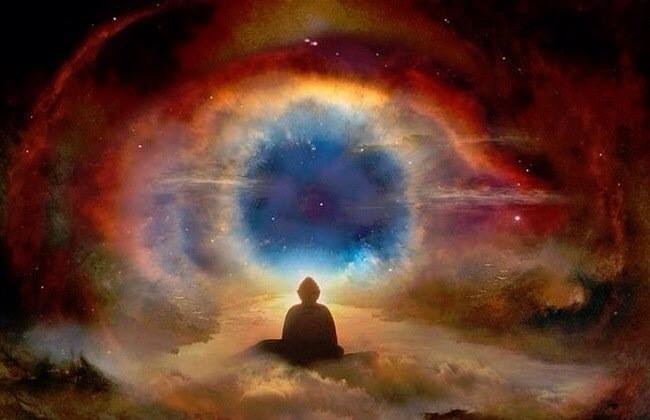



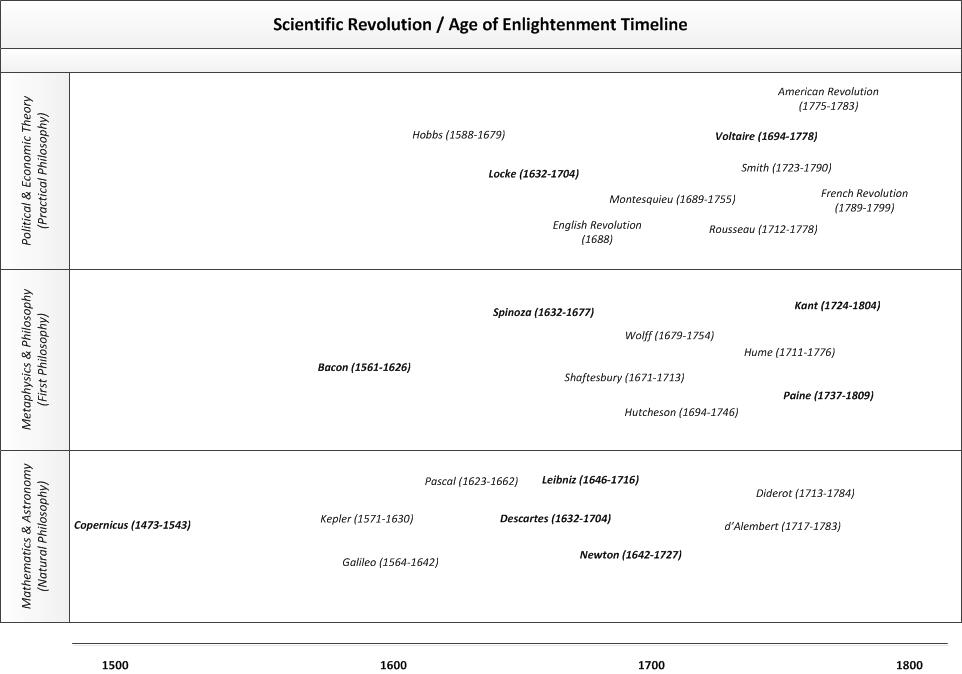
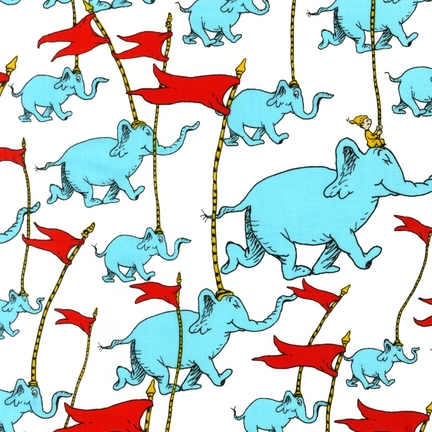
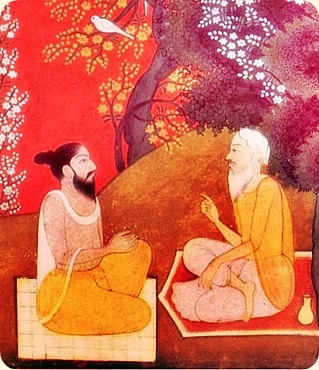
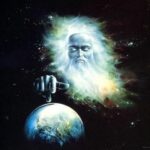
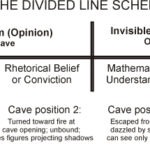
This put up is totaly unrelated to what I used to be looking google for, nevertheless it was indexed on the first page. I guess your doing something correct if Google likes you adequate to place you at the first page of a non related search. 184222
You can definitely see your enthusiasm within the work you write.
The world hopes for more passionate writers like you who aren’t afraid to say
how they believe. All the time follow your heart.
Great blog you’ve got here.. It’s difficult to find high quality writing like yours these days.
I seriously appreciate individuals like you!
Take care!!